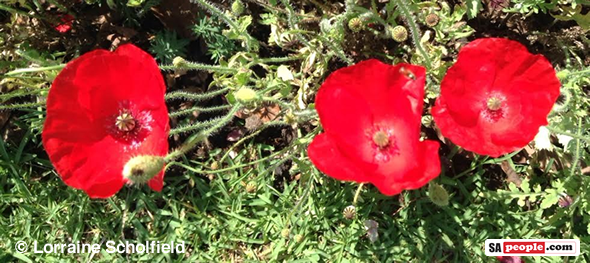
Remembrance Day – Poppies & our Fallen Soldiers
Today is Remembrance Day (or Poppy Day) when members of the Commonwealth remember those in the army who fought and died in the First World War of 1914-1918.. The Tower of London moat in the UK has been decorated with an incredible ceramic poppy installation to mark the Centenary of the start of the conflict […]

Today is Remembrance Day (or Poppy Day) when members of the Commonwealth remember those in the army who fought and died in the First World War of 1914-1918..
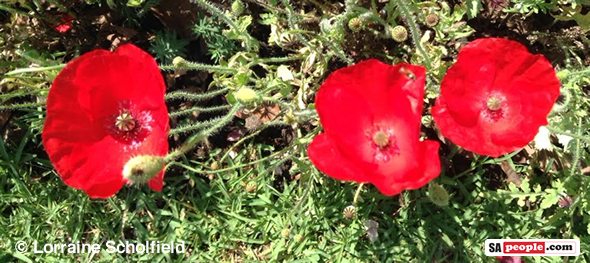
The Tower of London moat in the UK has been decorated with an incredible ceramic poppy installation to mark the Centenary of the start of the conflict which gave birth to the Flanders poppy as both a symbol of Remembrance and Hope.
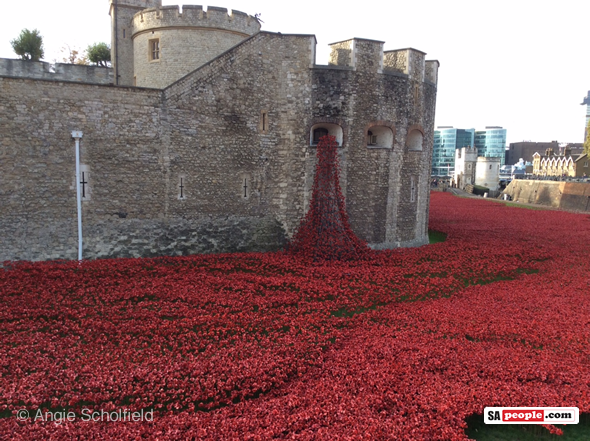
South African abroad, Angie Scholfield, made the journey with many other Londonders to visit the site, which has had such a visual and emotional impact.
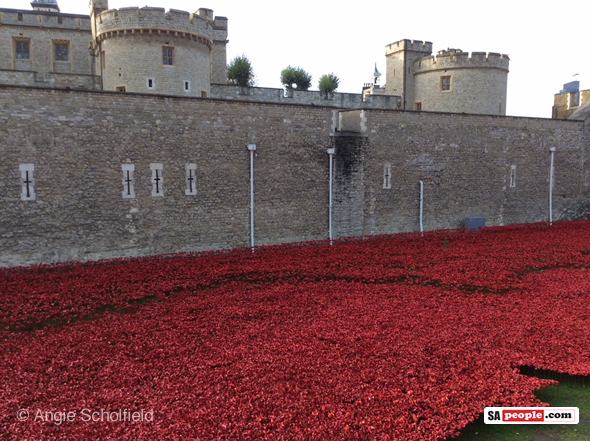
In total the Tower of London installation consists of 888,246 hand-made Ceramic poppies, each representing a British Military death during the First World War. The poppies have all been sold at £30 each!
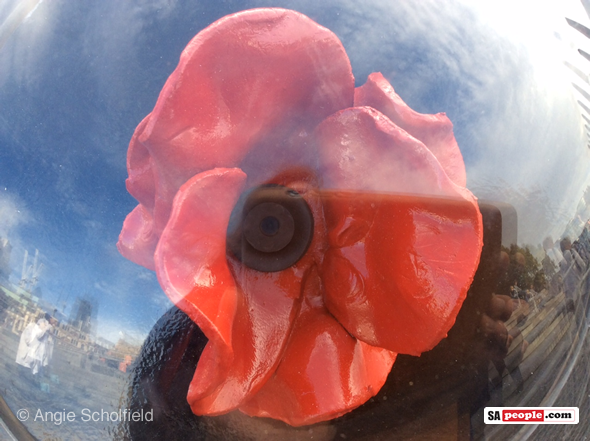
South Africa does not honour the day with a public holiday, but Commemoration ceremonies are usually held around the country, including at the Voortrekker Monument cenotaph in Pretoria (seen below).
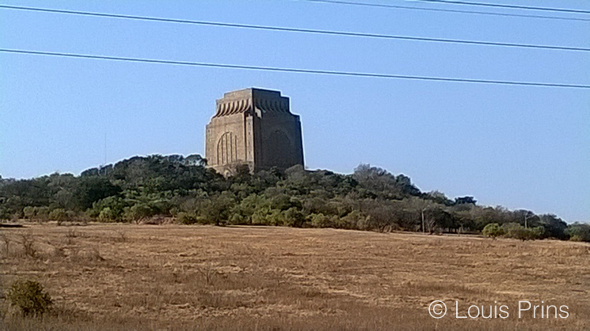
As a tribute to all our South African soldiers who lost their lives on foreign soil, fighting in the “Great” War, here is a collection of photos from SAPeople contributors who have made the pilgrimage to visit the graves of our fallen soldiers.
Below is the grave of a 19-year-old South African soldier. Private GA Brimelow, taken by Waldo Enslin…
“I found this grave in France – one of quite a few from World War I…so sad,” says Waldo. “In this particular grave site, near the town of Somme, there were about eight South African graves. There are grave yards scattered all over – when you enter, you will usually find a brass door in a wall with a folder in that has all the nationalities and plot numbers.”
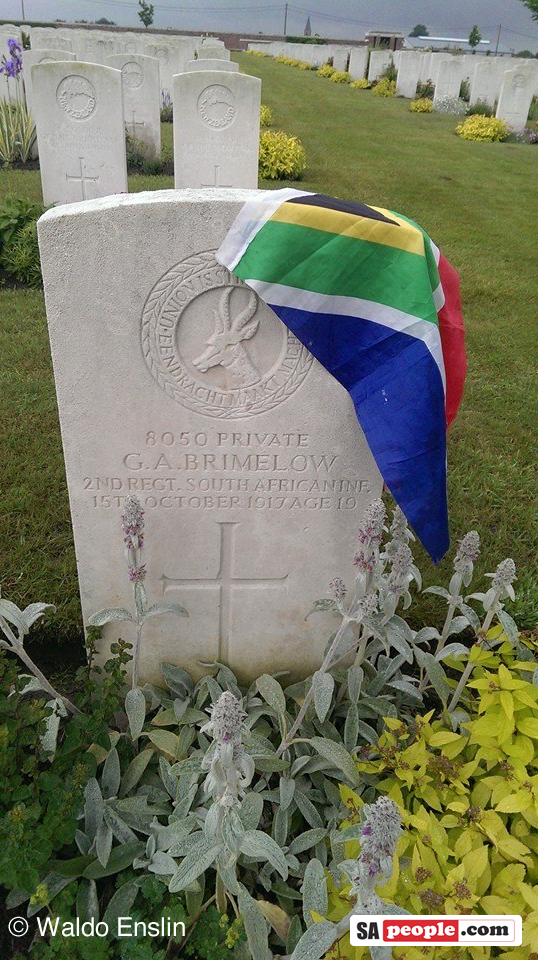
Jane Jackson sent in the below and said “So sad. Private Brimelow [above gravestone] was in the same regiment as my great uncle and they died exactly one year apart, to the day! My great uncle was one of only a handful of SA soldiers to survive the hell that was the Battle of Delville Wood in July 1916, only to be killed in the mud of the Somme a few months later. Such a tragic waste of so many young lives :’-(.”
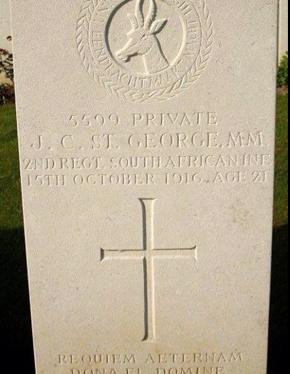
Dirk Barendse found this, “a grave of an unknown South African soldier – he was identified by his uniform. Lest we forget….”

Lutendo Ratshibaya sent in this photo of a tree, the last remaining Hornbeam from the battles of 1916, Arques la Beataille, France. Beneath it is a close-up of the plaque in front of the tree.
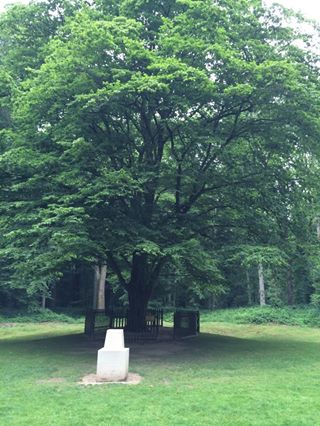
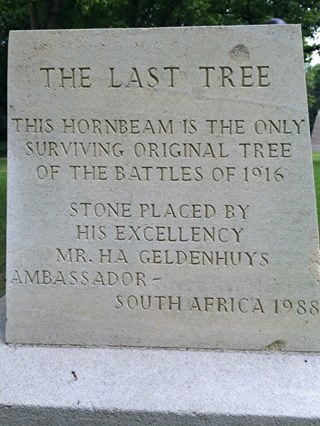
Jack Van Den Berg found this “at the Gorre Chateau in France, near Richebourg…we were there recently on holiday in April…and went and visited a lot of the war memorials…”
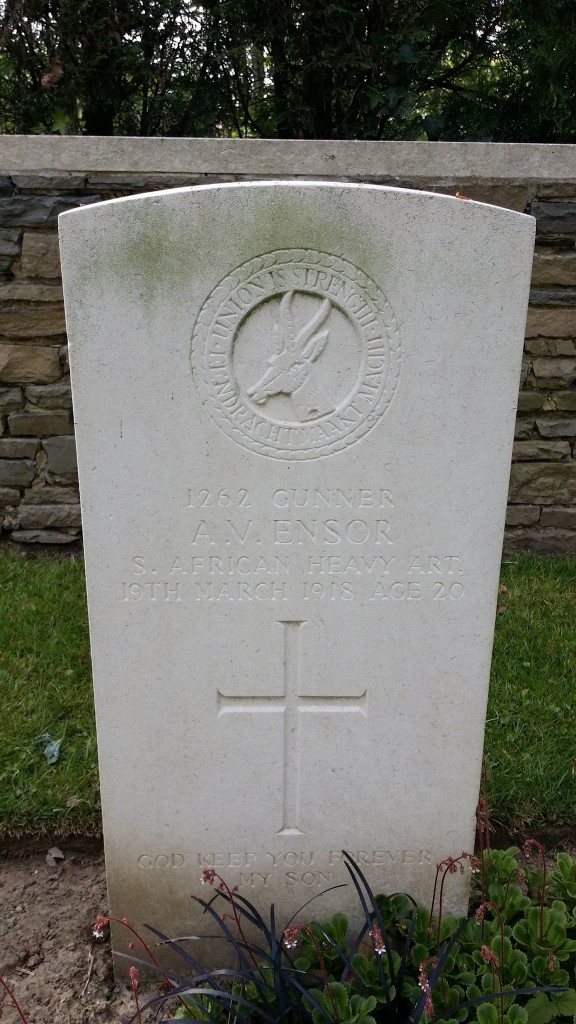
In honour of of those who died so that we may be free, here is possibly the most famous poem that is republished on Remembrance Day. It originally appeared in The Times newspaper of London, on 21st September 1914.
For the Fallen
by Robert Laurence Binyon
 With proud thanksgiving, a mother for her children,
With proud thanksgiving, a mother for her children,
England mourns for her dead across the sea.
Flesh of her flesh they were, spirit of her spirit,
Fallen in the cause of the free.
Solemn the drums thrill: Death august and royal
Sings sorrow up into immortal spheres.
There is music in the midst of desolation
And a glory that shines upon our tears.
They went with songs to the battle, they were young,
Straight of limb, true of eye, steady and aglow.
They were staunch to the end against odds uncounted,
They fell with their faces to the foe.
They shall grow not old, as we that are left grow old:
Age shall not weary them, nor the years condemn.
At the going down of the sun and in the morning
We will remember them.
They mingle not with their laughing comrades again;
They sit no more at familiar tables of home;
They have no lot in our labour of the day-time;
They sleep beyond England’s foam.
But where our desires are and our hopes profound,
Felt as a well-spring that is hidden from sight,
To the innermost heart of their own land they are known
As the stars are known to the Night;
As the stars that shall be bright when we are dust,
Moving in marches upon the heavenly plain,
As the stars that are starry in the time of our darkness,
To the end, to the end, they remain.
